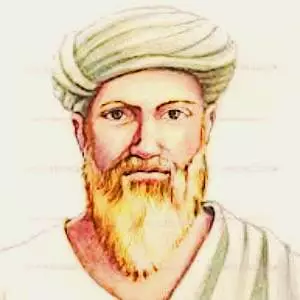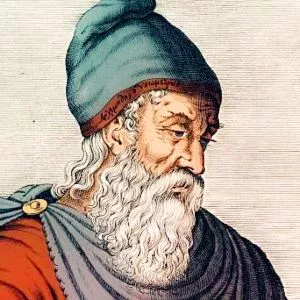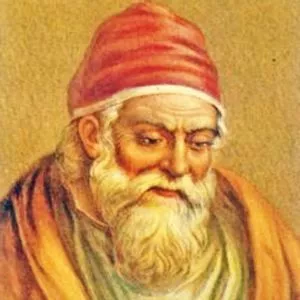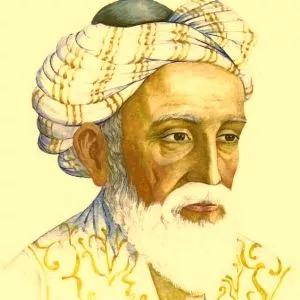
What is Geometry? Origins of Geometry

Table of Contents
What is Geometry in Math?
Geometry is a branch of mathematics that deals with the study of spatial relationships, shapes, and sizes. It is concerned with the properties and measurements of points, lines, angles, surfaces, and solids in space. The word “geometry” comes from the Greek words “geo” meaning “earth” and “metron” meaning “measure”, which reflects the original focus of the subject on the measurement of distances, areas, and volumes in the physical world.
Geometry has many practical applications in fields such as architecture, engineering, physics, and computer graphics. It is also an important part of the secondary school mathematics curriculum, where students learn about concepts such as points, lines, angles, polygons, circles, and three-dimensional shapes, as well as how to use geometry to solve problems and prove mathematical theorems. Geometry plays a crucial role in helping us understand the structure of the world around us and in providing a foundation for further study in mathematics and science.
Even though geometry is a subject area originated from the mathematics studies, it is undoubtedly one of the most fundamental areas of research serving to solve everyday problems of humanity and explain the way our world works.
Thus, we can find geometry in every corner of our lives. In fact, the rise of geometry starts with philosophers and thinkers observing the nature and things around them. One of the most fascinating and deep-rooted practices of the world. If you think that geometry is just a challenging topic at school you might want to dive into its rich history.
This elegant practice originates from the concerns of everyday life and has a long past starting from 3100 BCE in Egypt and Mesopotamia.
What is Geometry used for?
Here are some specific examples of how geometry is used in different areas:
Architecture: Architects use geometry to design and create building plans, ensuring that structures are safe and functional. They also use geometry to calculate areas, volumes, and dimensions of spaces and objects.
Engineering: Engineers use geometry to design and build everything from bridges and tunnels to airplanes and spacecraft. They use geometric principles to ensure that these structures are safe and stable.
Computer Graphics: Computer graphics use geometry to create realistic 3D models of objects and environments. This is used in various industries such as video game design, film special effects, and virtual reality simulations.
Physics: Geometry is used in physics to understand the shape and structure of objects in space. For example, the principles of geometry are used to study the shapes of planets, stars, and galaxies.
Surveying: Surveyors use geometry to measure and map land and other physical features. They use geometric principles to calculate distances, angles, and areas of land.
These are just a few examples of how geometry is used in various fields. In general, geometry is used to understand the world around us and to solve problems related to shapes and spaces.
Euclidean Geometry
A few old societies there fostered a type of geometry fit to the connections between lengths, regions, and volumes of actual items. This geometry was systematized in Euclid’s Elements around 300 BCE based on 10 aphorisms, or hypotheses, from which a few hundred hypotheses were demonstrated by rational rationale. The Elements exemplified the proverbial logical technique for a long time.
Logical Geometry
Scientific geometry was started by the French mathematician René Descartes (1596-1650), who acquainted rectangular directions with finding focuses and empowering lines and bends to be addressed with logarithmic conditions. Logarithmic geometry is a cutting-edge expansion of the subject to multi-faceted and non-Euclidean spaces.
Projective Geometry
Projective geometry started with the French mathematician Girard Desargues (1591-1661) to manage those properties of mathematical figures that are not changed by projecting their picture, or “shadow,” onto another surface.
Differential Geometry
The German mathematician Carl Friedrich Gauss (1777-1855), regarding useful issues of looking over and geodesy, started the field of differential geometry. Utilizing differential analytics, he described the inborn properties of bends and surfaces. For example, he showed that the natural ebb and flow of a chamber is equivalent to that of a plane, as should be visible to cutting a chamber along its hub and straightening, however not equivalent to that of a circle, which can’t be smoothed without contortion.
Non-Euclidean Geometries
Starting in the nineteenth 100 years, different mathematicians subbed options in contrast to Euclid’s equal proposal, which, in its cutting edge structure, peruses, “given a line and a point not on the line, it is feasible to define precisely one boundary through the given guide lined up toward the line.” They would have liked to show that the choices were sensibly unthinkable. All things considered, they found that steady non-Euclidean calculations exist.
What is Modern Geometry?
The works of European geometers are known as modern geometry. Some of the most important figures of modern geometry are Descartes, Gauss, Newton, Riemann, and Leibniz. Geometers of the modern age have dealt with non-euclidian geometry. Analytic geometry which uses algebra to represent and solve problems in geometry was first initiated by the French mathematician Rene Descartes in hopes to understand the non-Euclidian spaces.
Another important product of modern geometry is the development of differential geometry which deals with properties of curves and surfaces using differential calculus.
Ultimately, geometry is an elegant practice standing upon a philosophical foundation, shining a light upon the day-to-day problems, and helping us understand the mysterious ways of the World.
Origins of Geometry
The greatest minds of the time planted the origins of geometry to try and solve the problems with land sharing, building, and measuring storage areas. But geometry, as we know it today, has risen in the 6th century BCE and owes its evolution to the great Greek philosophers such as Aristotle, Plato, and many others. Greek philosophers are also the ones to coin the word “geometry” which is essentially the combination of the Greek words geo (“Earth”) and metron (“measure”).
Greek Influence on Geometry
Geometry has found solid ground with the influence of Greek logic and philosophy. Starting from Thales, Greek philosophers have created different ways of thinking that have act as the basis for geometry.
Thales of Miletus

Thales of Miletus is the first person known to practice scientific philosophy. He used geometry to calculate the height of the Egyptian Pyramids and long distances. Thales is also the first person to be attributed a mathematical discovery with the Thales’ Theorem.
Pythagoras

Pythagoras was a Greek mathematician. The date and place of his birth are both unknown. He seems to have been born between 580 and 568 BC. He leave his stamp on geometry and mathematics. Considered as one of the most important Greek philosophers, he influenced many other philosophers such as Plato and latemathematicians. Pythagoras has left behind the Pythagorean theorem and the theory of proportions which are the cornerstone of geometry even in the 21st century.
Various stories are told of his parantage, but it was believed that his father was Mnesarchus, a merchant from Tyre and his mother Pythais a native of Samos. He is often described as the first pure mathematician who has contributed immensely towards the development of mathematics. However, we know relatively little about his mathematical achievements. We have nothing much of Pythagoras writings and he remains a mysterious figure.
Little is known about his early life. As a child Pythagoras spent his early years in Samos but travelled widely with his father. Certainly he was well educated, learning to play the lyre, learning poetry and to recite Homer, Three philosophers influenced him when he was a young man. They were Pherekydes, Thales and his pupil Anaximander. He visited Egyptian on the advice of his teacher Thales in order to study the “earth measurement” of Egyptian priests. Later he became more popular than his master. He used to deliver lectures on philosophy and mathematics. His lectures were heard by persons of all ranks.
The influence of Pythagoras on his listeners was so great that they formed themselves into a society called ‘order of Pythagoreaus’. This influence was more religious than political. Theano, the daughter of his host, was the most attentive listener. Pythagoras later married Theano, who wrote a biography of her husband, which is not traceable.
Pythagoras never embodied his findings in any treatise. Due to the lack of good writing material he followed the custom of his time in passing his philosophy along by words of mouth. In the absence of written documents it becomes difficult to separate the work of Pythagoras himself from what is available at present in the form of Pythagorean contributions.
- He was the first discoverer that earth was a sphere in the center of the Kosmos (Universe), that the planets, stars and the universe were spherical because the sphere was the most perfect solid figure. He also taught that the paths of the planets were circular Pythagoras recognized that the morning star was the some as the evening star, Venus.
- He knew that the plane space about a point maybe filled by six equilateral triangles, four squares or three regular hexagons.
- He is credited to descover the proof on the theorem of a right angled triangle. However, it is now known that the theorem had already been used by the Babylonians.
- He is credited for making geometry a science by basing it on axioms, postulates and definitions and by setting down methods of proofs.
- He believed that all things are numbers. Mathematics is the basis for everything and geometry is the highest form of mathematical studies. The physical world can understood through mathematics. Pythagoras once said that “Number is the ruler of forms and ideas and the cause of gods and demons.”
- The sum of the angles of a triangle is equal to two right angles.
- The discovery of irrational numbers is attributed to Pythagoreans, but seems unlikely to have been the idea of Pythagoras because it does not align with his philosophy that all things are numbers, since numbers to him meant the ratio of whole numbers. According to Pythagoras, “Number rules the universes.”
- Pythagoras studied odd and even numbers, triangular numbers and perfect numbers. Pythagoreans contributed to our understanding of angles, triangles, areas, proportion, polygon and polyhedra.
- The over-riding dictum of Pythagoras school was “1 is number” or “God is number” and the Pythagoreans effectively practiced a kind of numerology and considered each number to have its own character and meaning e.g. 1 was the generator of all numbers; 2 represented opinion; 3 harmony; 4 justice; 5 marriage; 6 creation; 7 the planets or “wandering stars” etc. Odd numbers were thought of as female and even numbers as male.
- Pythagoras also related music to mathematics. He had long played the seven string lyre, and learned how harmonious the vibrating strings sounded when the lenghts of the strings were proportional to whole numbers such as 2:1, 3:2, 4:3. Pythagoras also realized that this knowledge could be applied to other musical instruments.
- The holiest number of all was “tetractys” or ten, a triangular number composed of the sum of one, two, three and four. It is a great tribute to the ‘Pythagoreans’ intellectual achievements that they deduced the special place of the number 10 from an abstract mathematical argument rather than from something as mundane aas counting the figures on two hands. He believed that each number had its own personality traits and all different and unique e.g. 10 is the best number because it contains four consecutive integers (1+2+3+4=10).
- He descovered that any odd number say 2n+1 can be expressed as the difference of two squares: 2n+1=(n+1)2-n2.
- The Pythagoreans believed that the universe to be composed of five elements, one for each of the five regular solids. The earth arose from the cube, fire from pyramid (tetrahedron), air from the octahedron, water from the isosahedron and the sphere of the universe from the dodecahedron.
- Many mathematical terms like parabola, ellipse, etc. can be attributed to Pythagoras.
Plato

Plato, who is known as the “maker of mathematicians” has not only contributed to the rise of geometry but also educated numerous valuable geometers and mathematicians.
He is known for the identification of 5 regular symmetrical 3-dimensional shapes, which he considered as the basis for the whole universe. These geometric shapes known as platonic solids are tetrahedron, octahedron, icosahedron, cube, and dodecahedron. For Plato, each of these shapes represents different elements such as fire, air, water, and earth while the dodecahedron represents the harmony of constellations.
At Plato’s door, “Non-geometricians cannot enter our house!” the inscription is transmitted.
Archimedes

We can’t talk about geometry without mentioning Archimedes. He is regarded as one of the greatest scientists of all time and the oldest mathematician. Considered as one of the most popular mathematics in mathematics and physics, Archimedes has contributed a great deal to the evolution of geometry.
Archimedes produced much mathematical and geometric work. He has spent most of his young life solving arithmetic problems, including building techniques to calculate volume and surface space, defining pi, and building compound arithmetic. He not only knew the price of water and other things, but he also invented things.
His favorite activity was a mathematical model consisting of a globe with a cylinder of wide width. Archimedes has shown that the surface area is four times larger than that of the circle and that the volume of the sector is two-thirds the volume of the surrounding cylinder and the surface two-thirds of the surface of the surrounding cylinder, including its bases.
Archimedes was a scientist who completed his pioneer career in hydrostatic geometry. In geometry, he went on to work on Book XII of the Euclidean Elements. The problems he addressed and his solutions were at an all-time high.
Eastern Influence on Geometry
Several Eastern thinkers followed and criticized the work of Euclid and contributed to the new areas of geometry. Euclid, Abul Wafa al-Buzjani, Omar Khayyam, Nasir al-Din al-Tusi and many others showed great works on geometry.
Euclid

Euclid (300 BC) has the distinction of being the only man to summarise all the mathematical knowledge of his times. Beyond the fact that he taught at Alexandria, we know nothing with certainly about Euclid himself. It is possible that he may have been an Egyptian and not a Greek. He systematised Greek mathematics that was existed at the time. It is certain that Euclid taught mathematics about 300 BC in the Royal School at Alexandria in Egypt that had been founded by king Ptolemy the successor of Alexander, the great. His own education was probably acquired in Plato’s academy at Athens. He learnt the geometry of Eudoxus and Thealtetus of which he was familiar.
His book elements, the world’s most authoritative text on Geometry has made Euclid the father of Geometry. This mathematic treatise has been the centre of mathematics for 200 years. This has been used for centuries in Western Europe as Geometry Textbook. Alongwith ‘Element’ he wrote several books during his teaching profession for about 30 years. Once Ptolemy asked Euclid if there were any shorter way to study Geometry than throught the 13 books of the Elements, and Euclid replied that there was no royal road to geometry. The book ‘Elements’ is the greatest text book of all times. It was translated to various languages.
In this work, Euclid created a series of definitions of basic objects like points, straight lines, parallel lines surfaces, angles, circles and triangles, andaxioms. The Euclidean geometry we know today is based on these definitions and postulated derived from them. This is why Euclid’s influence on geometry is indisputable. His ‘Elements’ began with construction problems and the reader learned that a figure could be drawn Euclid collected all the geometrical facts known in his days, arranged the various theorems in proper order, improved their proofs where necessary and added theorems he himself had thought out.
He presented earlier mathematician’s work in a single, logically coherent framework, making it easy to use and reference in a beautiful way in elements. Euclid followed the steps of Aristotle in scientific philosophy and affected the world of mathematics and geometry irrefutably.
The year and the reason behind Euclid’s death is unknown to mankind. However, there have been vague appropriations that suggest that he might have perished around 260 BC. His books and treatises were sold and used by personalities all over the world until the 19th Century. It is said that Lincoln would religiously carry the ‘Elements’ with him wherever he would go, and would often quote the genius of Euclid’s work in his speeches. Even after Euclid’s death, Mathematician continued to write theorems and his work under his name.
- His major contribution in geometry was his book ‘The Elements’. He gave many rules of geometry which are also used now a days. He w as best known as father of geometry.
- Euclid’s five postulates are central to his plane geometry .Primary terms such as point and line are defined; unproved assumptions or postulates are started.
- He proveded that are only five “Platonic Solids”.
- Euclid thought about three current problems of his time namely
- dividing an angle into 3 equal parts
- making double of a cube
- obtaining square from a circle
- Other books of Euclid are ‘The Division of the Scale’ (a mathematical discussion of music), ‘The Optics’, ‘The Cartoptrics’ (a treatise on the theory of mirrors), a book on spherical geometry, a book on logical fallacies.
- Several of his master pieces have been lost including works on conic sections and other advanced geometric topics.
- He solved unresolved problems related to irrational numbers.
- He is credited with the well known proof of the Pythagorean theorem.
- He proved that it is impossible to find the “largest prime number”, because if we take the largest known prime number, add 1 to the product of all the primes upto and including it. We will get another prime number. Euclid’s proof for this theorem is generally accepted as one of the classic proofs because of its conciseness and clarity.
Abul Wafa al-Buzjani

Abul Wafa al-Buzjani was a Persian mathematician and astronomer who lived in the 10th century. He made important contributions to the fields of geometry and trigonometry.
Working on understanding the Moon’s orbit, he wrote “theories of the Moon” which included valuable information such as the first introduction of the tangent, secant,and cosecant functions and improvement in calculations for trigonometrical tables. For his valuable contributions, a crater on the Moon is named after Abul Wafa. His work on spherical triangles is also one of his most important contributions to geometry.
He also worked on the classification of quadrilaterals and developed a formula for finding the area of any quadrilateral given the lengths of its sides and one of its diagonals. He was also interested in the geometry of conic sections, including the parabola and ellipse.
In addition to his work in pure geometry, Abul Wafa applied his geometric knowledge to solve problems in astronomy and surveying. He developed a method for determining the direction of Mecca from any location using only a sundial and simple geometric constructions. He also worked on the problem of finding the direction of Qibla (the direction of prayer) for Muslims.
Abul Wafa’s work in geometry and trigonometry was highly influential, and his ideas were transmitted to later generations of mathematicians in both the Islamic world and Europe. His theorems and formulas continue to be studied and used in modern mathematics today, demonstrating his lasting impact on the field.
Abul Wafa al-Omar Khayyam

Omar Khayyam is one of the most influential Islamic mathematicians. He was a Persian polymath who lived in the 11th and 12th centuries. He was born in Nishapur, Iran, in 1048 and died in 1131. Khayyam was a scholar in multiple fields, including mathematics, geometry, astronomy, philosophy, and poetry
Omar Khayyam made significant contributions to the field of geometry during his lifetime. He is well-known for constructing the quadrilateral with two equal sides perpendicular to the base. He developed a new method for constructing a regular heptagon (a seven-sided polygon with equal sides and angles) using only a compass and straightedge. His work on the geometrical method of solving cubic equations by intersecting a parabola with a circle has created great attention.
Furthermore, Khayyam contributed to the study of Euclidean geometry, making several important discoveries and proofs. He discovered some non-Euclidian properties while looking to prove Euclid’s fifth postulate. Although he did not succeed in his attempt, his work on the subject influenced later mathematicians and contributed to the development of non-Euclidean geometries.
Overall, Omar Khayyam’s work in geometry was innovative and influential, and it contributed significantly to the development of modern mathematics. His insights and discoveries continue to be studied and admired by mathematicians today.
